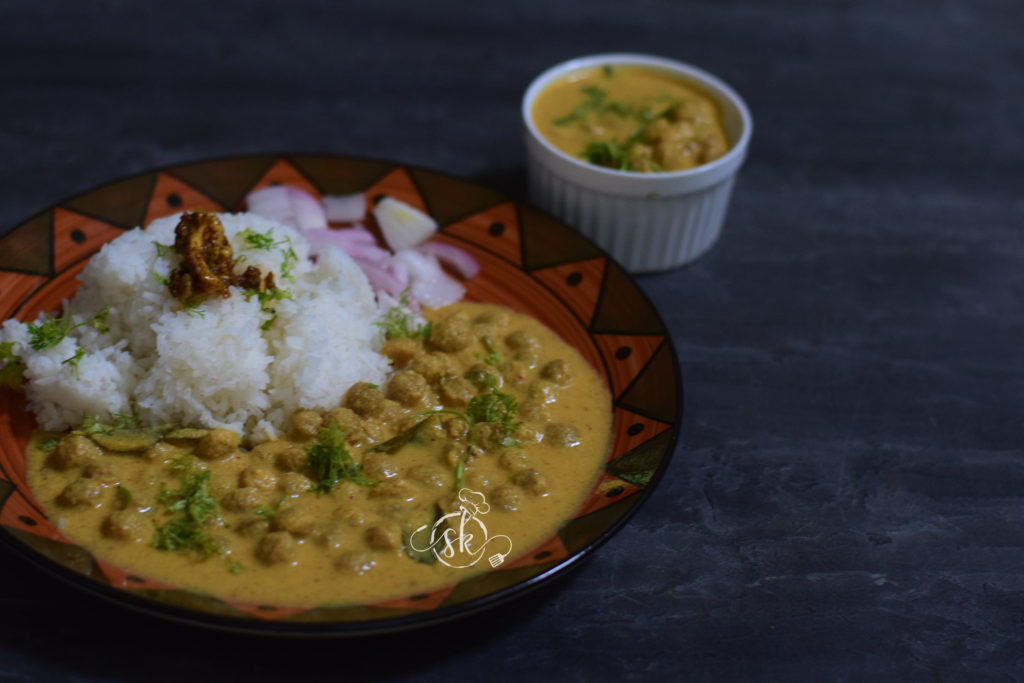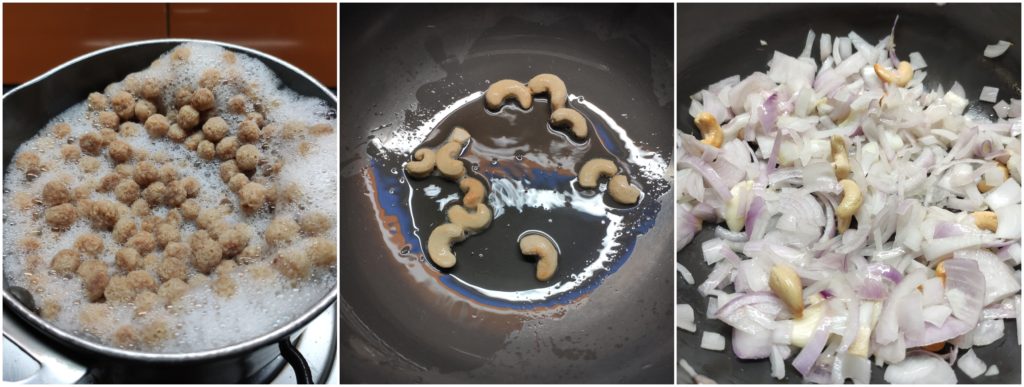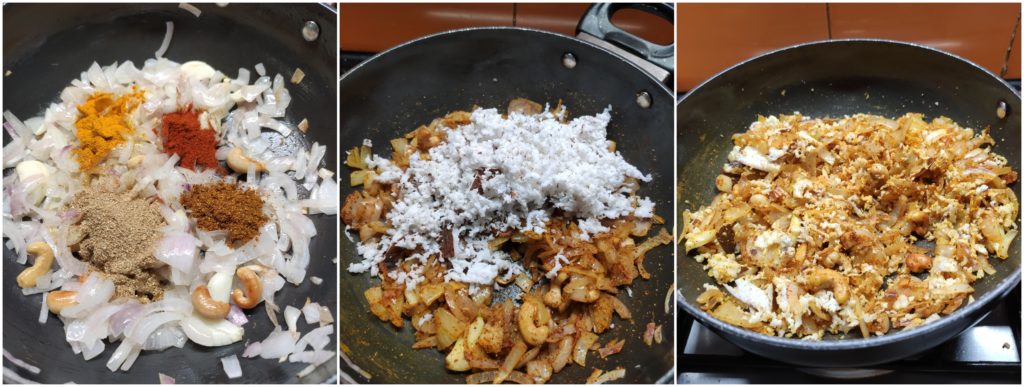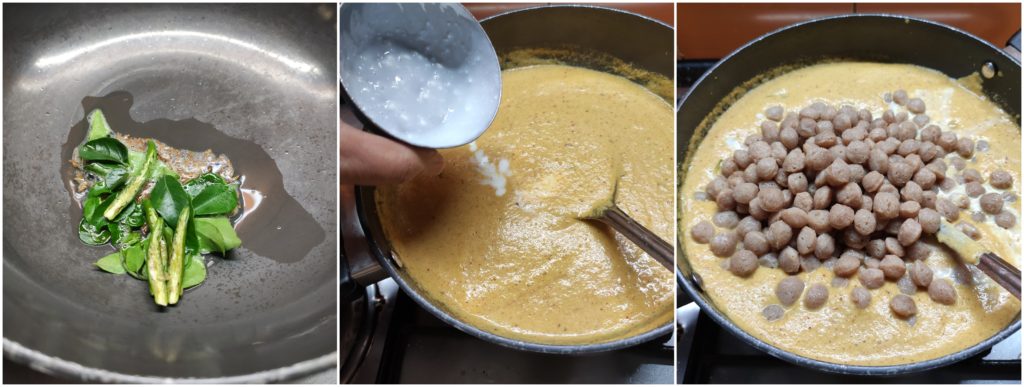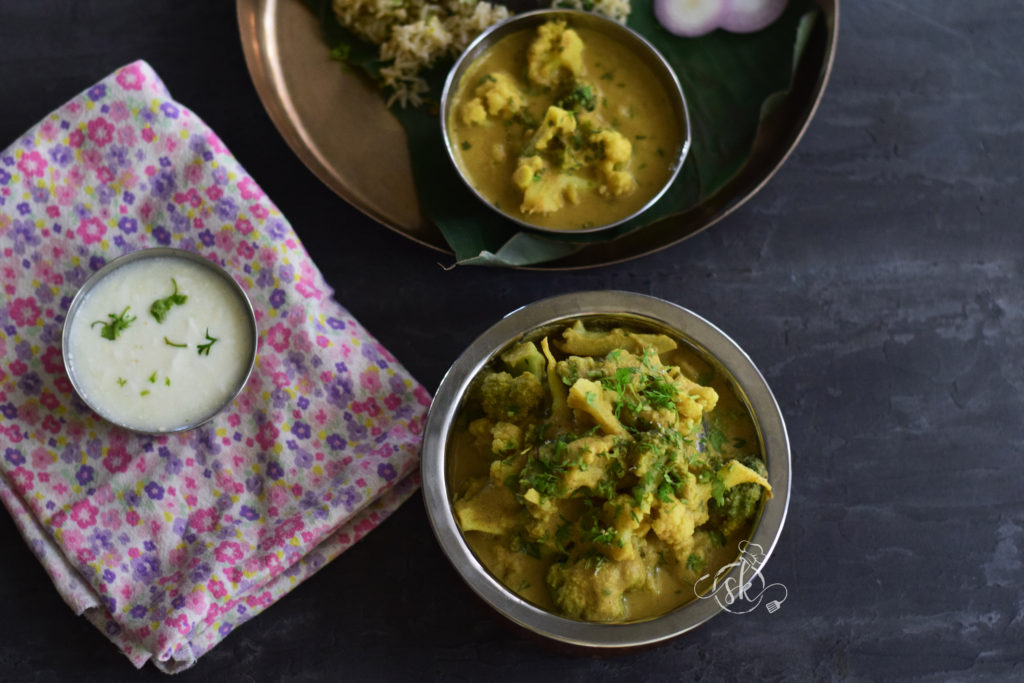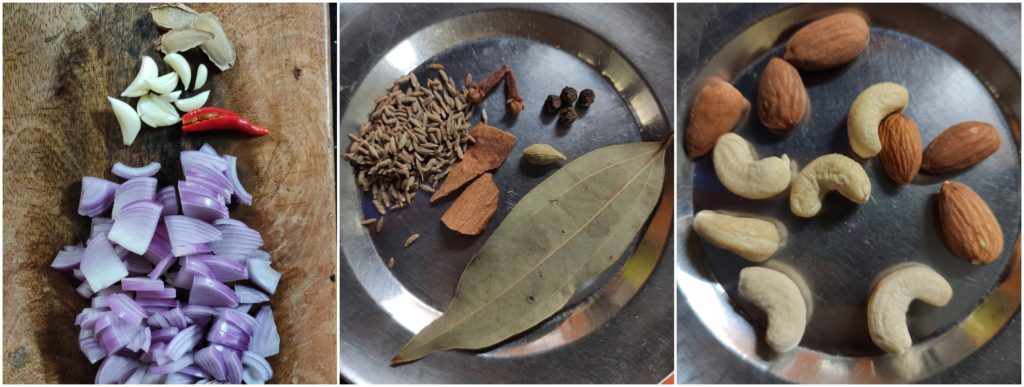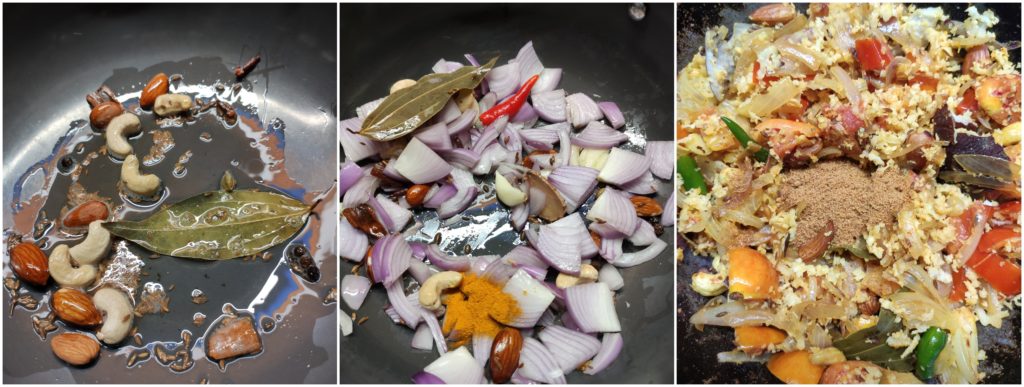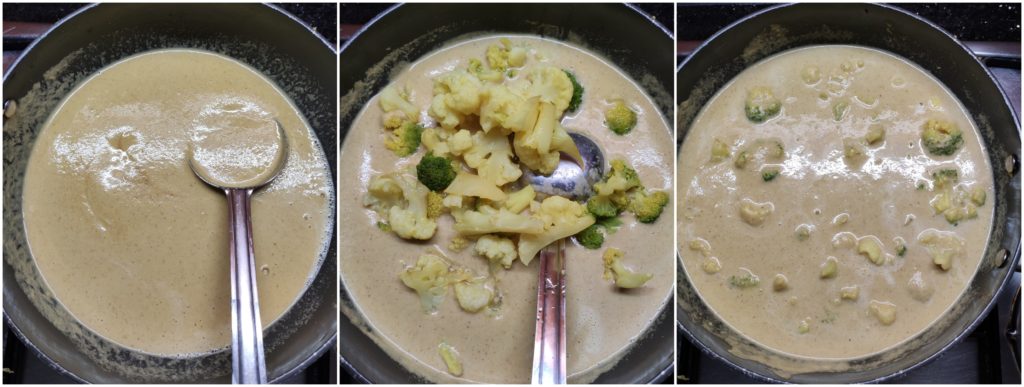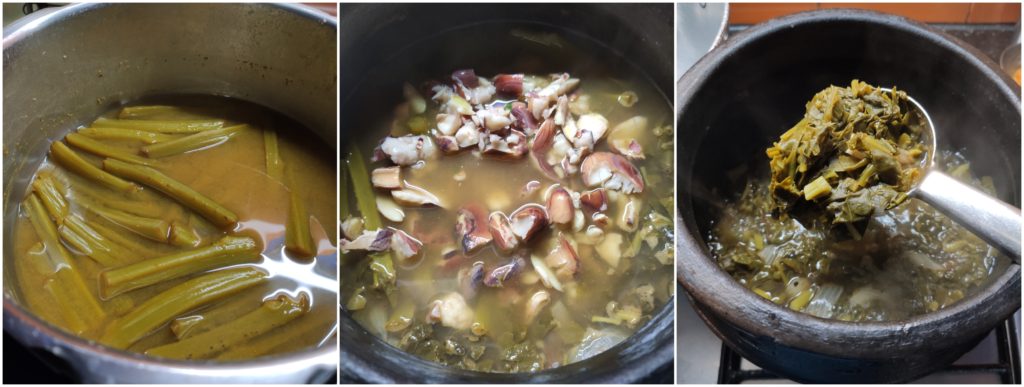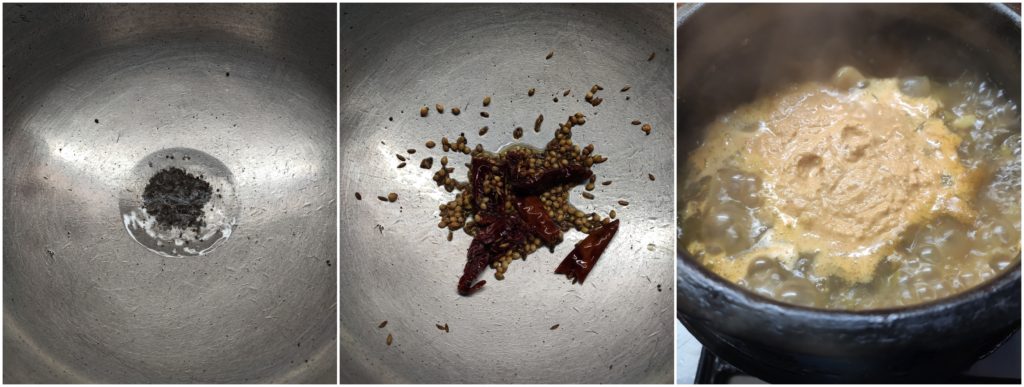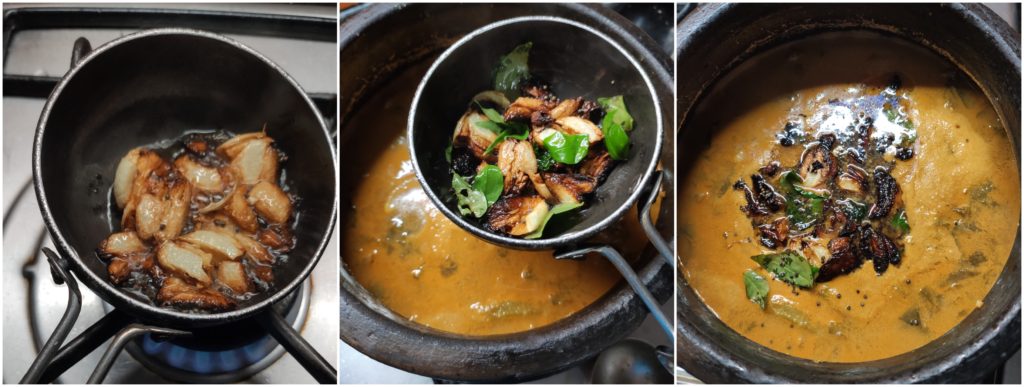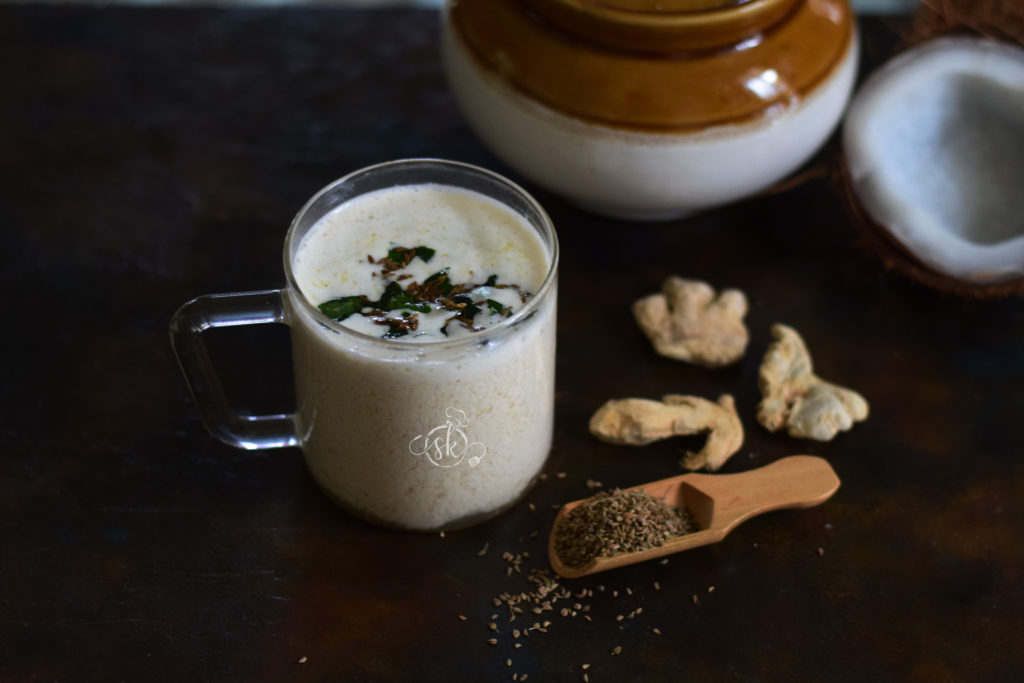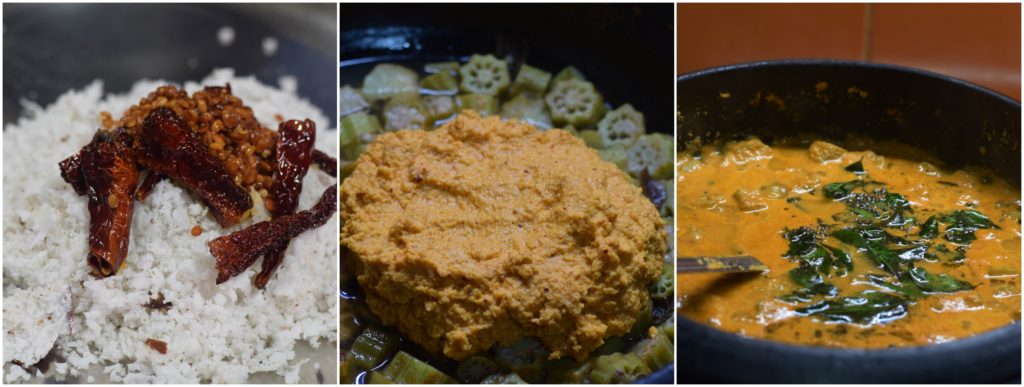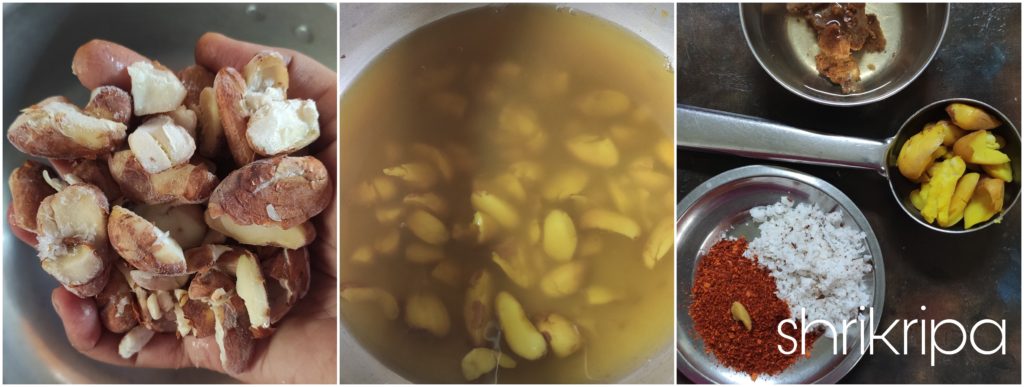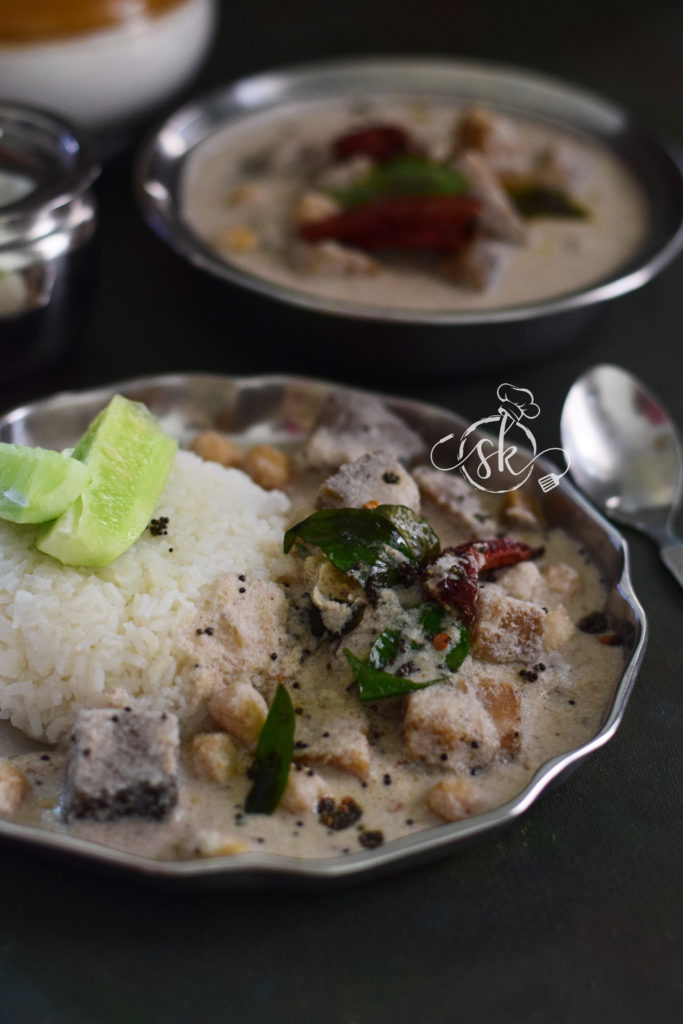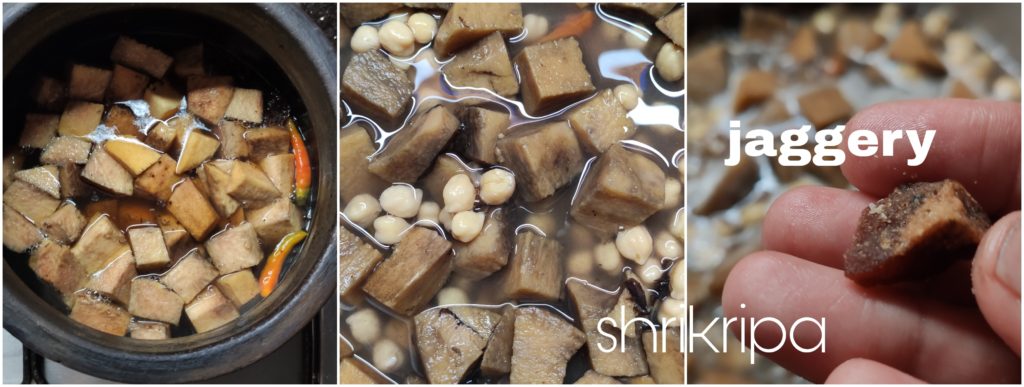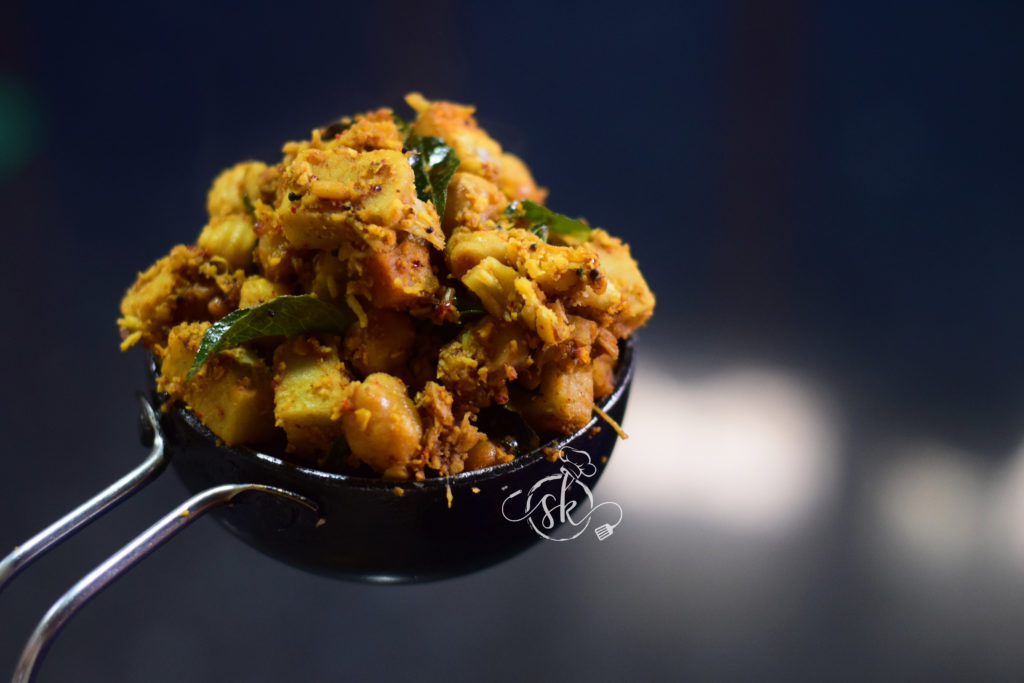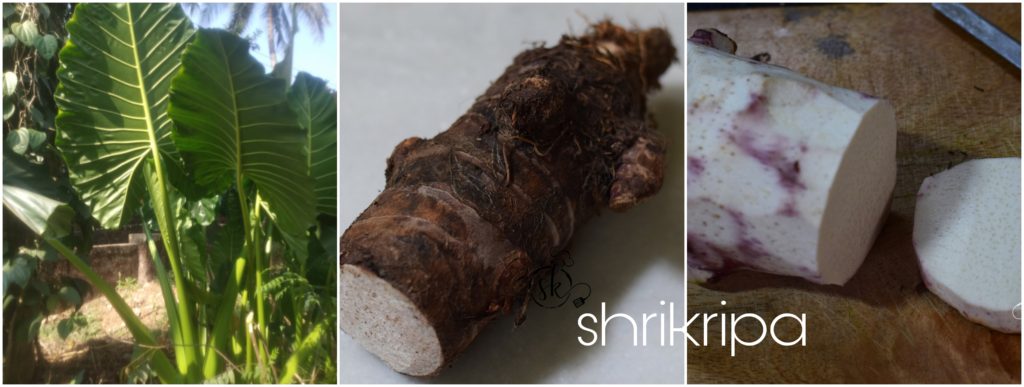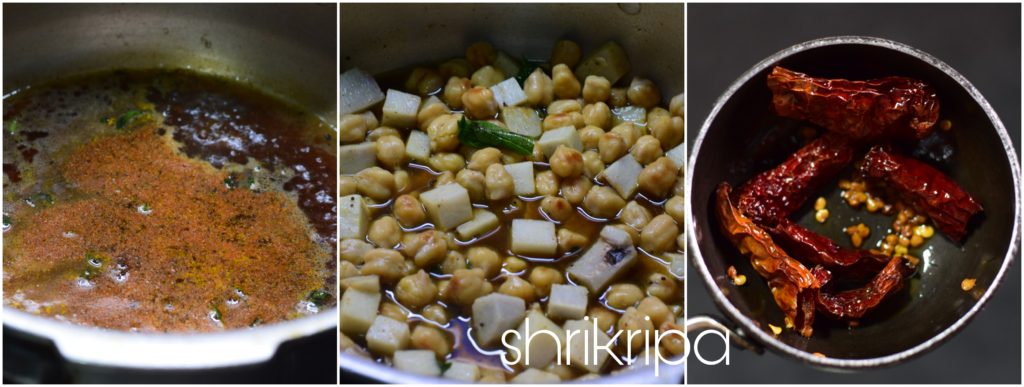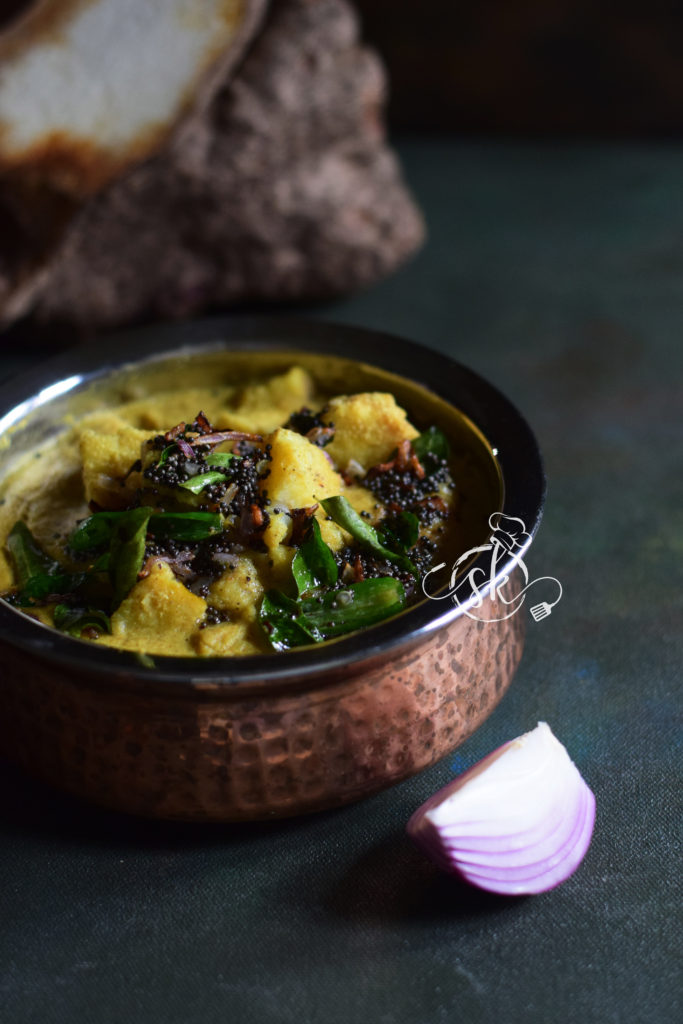Bittergourd always comes under the Love or Hate category. People are fond of this veggie or hate it at the core. Bitter gourd is an acquired taste. All four of us in our family love it and Bitter gourd Melara is synonymous with the Chowthi celebration at our home. As a kid, I relished Chakli dunked in this Melara, and the custom continues with my daughters.
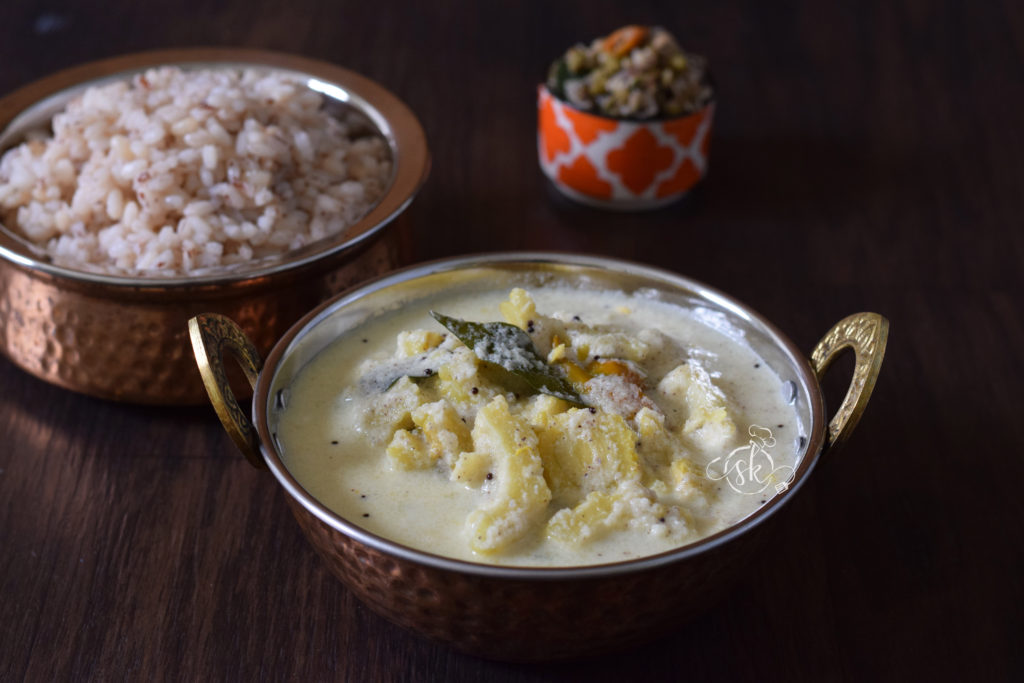
In Mangalore, we always use pale/white bitter gourd the most,taste-wise less bitter and loved by many.
Method:
Ingredient:
Bitter gourd – 1 big
Salt- as needed.
Green chillies – 2
tamarind – one gooseberry size (soak in 1 cup of water)
To grind: Fresh Coconut – 1 ½ cup
For Seasoning: Coconut oil- 1 tablespoon, mustard – 1tsp, red chilli – 1 (optional), curry leaves- 1 spring.
Method:
-Wash the bitter gourd, slice roundels, and if seeds are hard, remove seeds.
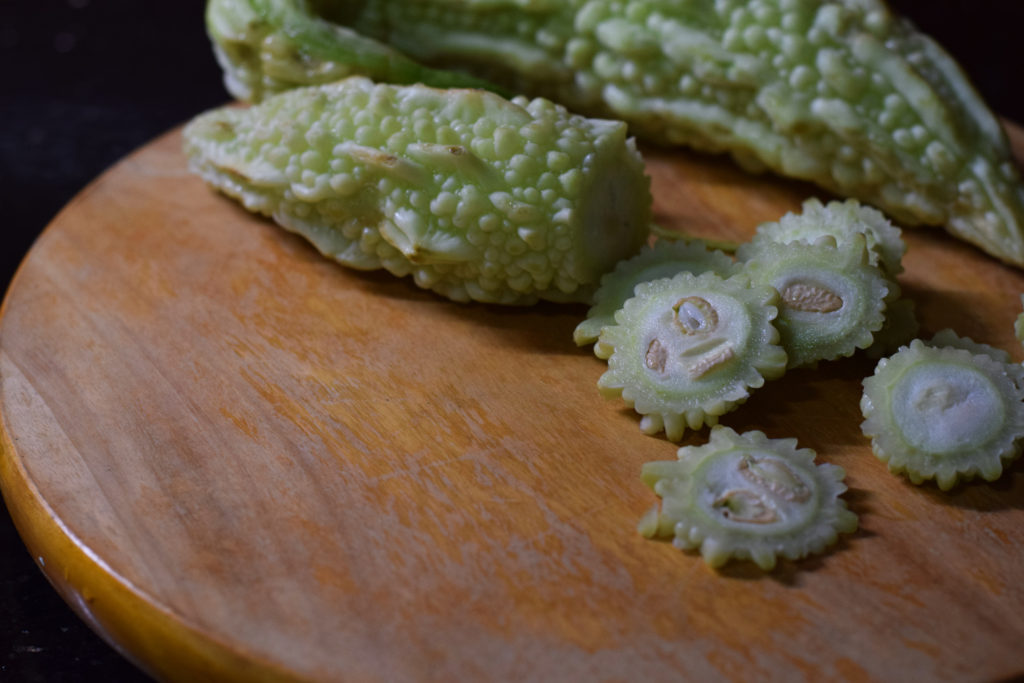
-Boil little water, add tamarind pulp, slit green chillies, salt, and Bitter gourd roundels and cook until it is soft and perfect.
-Now, grind the coconut into a fine paste, add the paste to the cooked veggie, adjust the consistency, and boil for 2 minutes.
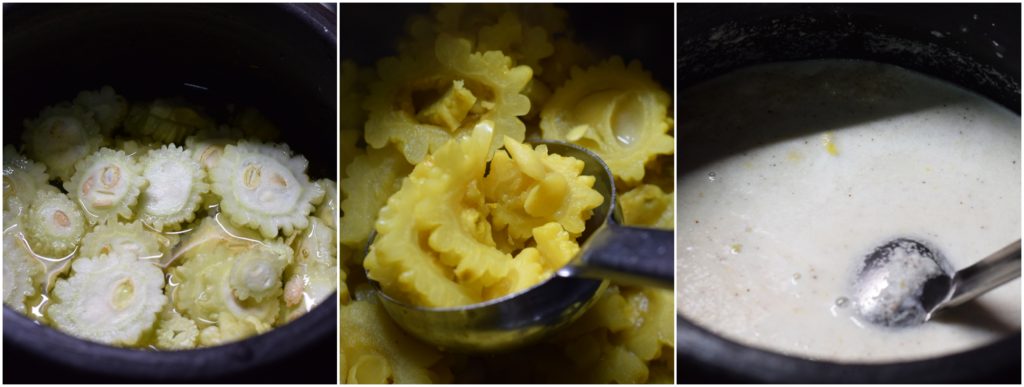
-Add buttermilk or beaten curd, and switch off when it starts to boil.
-Prepare seasoning, heat oil, splutter mustard, add red chilli and curry leaves, fry and pour over Melara. Serve with Rice.
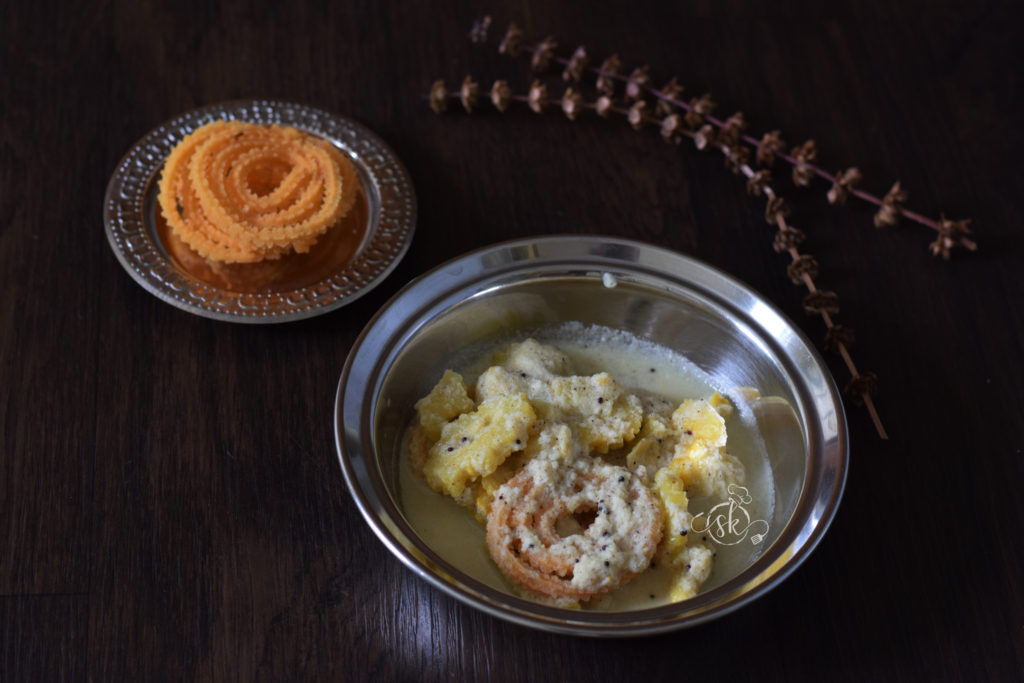
The best way to have this Melara is during festivals when Chakli is made. That too Chakli immersed in a pool of bitter gourd Melara. Try this if you have not tried it yet.

